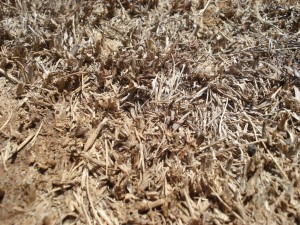 A new design puts the final nail in AOL Patch’s coffin
A new design puts the final nail in AOL Patch’s coffin
It was a love-hate relationship, but it’s coming to an end. This week, the San Leandro Patch and its siblings across the country are changing formats yet again, in a last-ditched effort to find a profitable model. Patch executives finally got the memo that social media is what currently drives online advertising. They don’t seem too sure about what social media is, however, and they’ve decided to turn their site into a hybrid between a blog and an old-fashioned rudimentary bulletin board. Their nostalgia is not surprising: fifteen years ago they were almost printing their own money.
From a user’s point of view, however, the new format (as previewed on the Stonington-Mystic Patch) is a mess. The site divides the screen into three columns. The main one mixes “stories” and blog postings from community members. Of course a “story” for the Patch is now synonymous with “posting”. Actual news, much less “hyperlocal news”, are rare. More frequent are polls, how-to’s, real estate listings and other low-information postings.
Patch’s hopes are lying on the second column (the third one merely carries advertising). This is where “board” postings are placed. Board postings include announcements and events, long available to Patch users, as well as “anything goes” postings. Their hope is that people will use it to bring up random topics that will get other readers interested. It seems like a long shot, and it definitely is not working on their model Patch site. Their “board” currently includes a yard sale announcement, followed by a rant about the whether, followed by an ad for a car for sale and then some announcements. Even if someone tried to post something of interest, it’s unlikely that anyone could read it as the format does not allow for multiple paragraphs. Apparently, the Patch’s nostalgia goes back to antiquity, before these were developed (fortunately, they have not done away with punctuation or spaces between words, another rather modern invention).
In order to add these random postings, the Patch’s format eliminates the one element that makes the website work: the area which highlights the latest comments left by users.. I know that there are many stories I do not bother to read until someone has something to say about it – and I also know that readership on a story goes up right after I leave a comment on it. The new format forces you to seek out comments, which I cannot imagine many readers will do.
This change, however, only accelerates the inevitable death of the Patch. In reality, the Patch was never a financially viable project. While AOL had loads of money to throw at it, even those resources are finite. Perhaps, if they’d brought in the right people with the right understanding of the market, it could have worked – but even that is highly questionable. It’s been a good ride, and I think we can anticipate the website will stay up until next year, but my prediction is that with the new format the San Leandro Patch will become what the Stonington-Mystic Patch already is: a digital ghost town.
Note: This article has been rewritten for readability.
